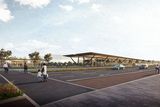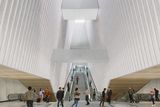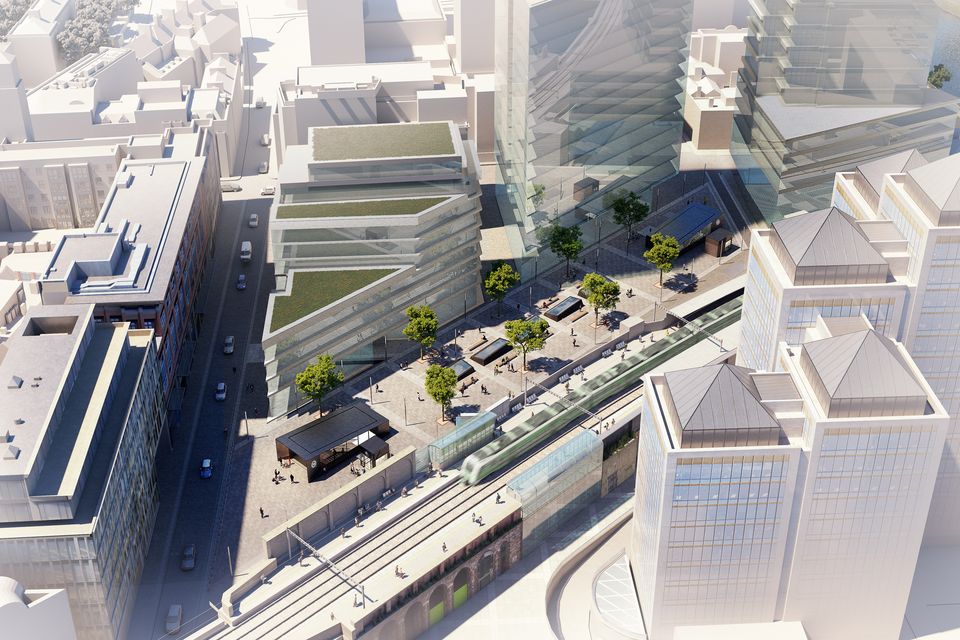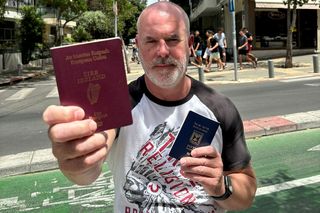MetroLink: I had a sneak peak at the proposed stations via virtual reality headset




Twenty-five metres underground is not the most likely place to see the sky but the stations designed for MetroLink have a few surprises.
"When man was in caves, he only went in there for shelter. He wanted to be out in the light," explains Paolo Carbone of the decision to include skylights where feasible.
"It's not the most natural experience to go underground so we wanted to make it as pleasant as possible."
I’m ‘underground’ staring up at a skylight three storeys above me courtesy of a virtual reality headset that provides a sneak preview visit to the proposed MetroLink station at Tara Street.
If the rail project for Dublin gets the go-ahead, this will be one of 16 stations along the 19km route from Swords to Ranelagh.
2011 Grimshaw Architects
Eleven will be deep underground and the rest just one short escalator ride below.
Tara Street’s platform is three escalator rides below, the designers having made the decision not to ask passengers to take the plunge in one go.
Breaking up the trip into three parts over three mezzanine floors takes up more space but allows more light, says Mr Carbone.
Light is a big theme in a city where, excluding the Port Tunnel, all transport takes place firmly above ground.
The colour palette for the floor tiles and wall paint is pale, the entrances to the stations are glass and a high bulb wattage creates daylight even where skylights can’t be provided.
Once on the platform there is no access to the tracks, a wall of glass sparing passengers endless ‘keep behind the yellow line’ warnings.
Glass doors only slide open when the carriages are in place and if they don’t align exactly with the carriage doors, they stay firmly shut.
Manoeuvring buggies and wheelie cases over gaping chasms and dropping phones into the abyss will not be an issue.
Metrolink
“More and more metro are retrofitting glass barriers,” says Mr Carbone, head of public transport projects with Transport Infrastructure Ireland (TII).
“It’s safer, it’s more efficient, it’s more reliable,” he says, adding, perish the thoughts: “It also stops people from using tunnels as shortcuts.”
If MetroLink services are as fast and frequent as TII says they will be, there would be little advantage in tunnel-hopping.
Initially services would run every three or four minutes but the platforms are wide and long enough to handle the back and forward of peak-time passengers every 90 seconds.
Today's News in 90 Seconds - April 17th
The proposed Fosterstown Station at Swords can also be ‘visited’ via the VR headset and it gives a taste of the design intended for the stops on the shallow sections of track.
With an enclosed glass bike park, space for an outdoor coffee dock, and bus stops nearby, it creates a visually pleasing public realm.
Both stations come with complexities. Tara Street requires the demolition of 70 apartments and eight houses while Fosterstown needs Fingal County Council to narrow and slow the traffic-laden R132.
A VR headset can only deliver so much reality though.
TII say it will be available for use at future public information sessions.
Join the Irish Independent WhatsApp channel
Stay up to date with all the latest news




















